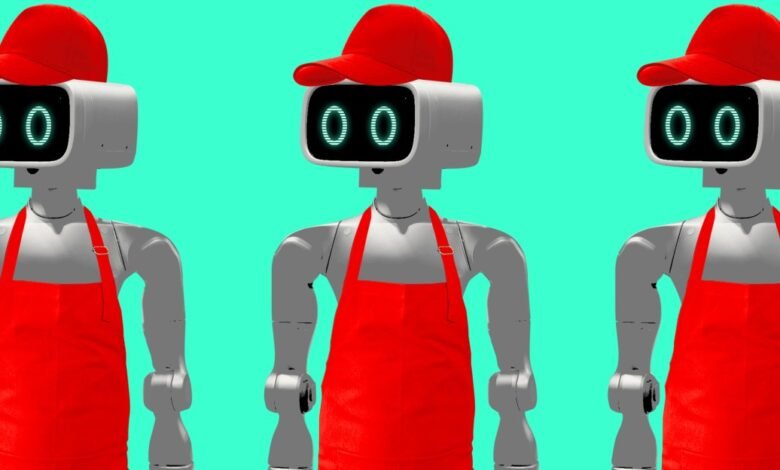Tech’s Next Target: The Scraps Teens Fight Over

▼ Summary
– Robots currently stock shelves in Japanese convenience stores, and similar automation is expected to be tested soon in major U.S. retailers like Walmart.
– Teen labor force participation in the U.S. has dropped significantly, from 52.3% in August 2000 to 34.8% in August 2025.
– Automation shifts compensation from workers to business owners, increasing profits but not providing cheaper or more reliable products for customers.
– Teens miss out on valuable formative experiences by not working, including learning job responsibilities and developing financial literacy skills.
– Automation displaces lower-skill workers, increases income inequality, and pushes adults into jobs traditionally held by teens, further reducing youth employment opportunities.
The landscape of teen employment is undergoing a seismic shift, with automation rapidly encroaching on the entry-level positions that once served as a financial and social training ground for young adults. While Japan already utilizes robots to stock convenience store shelves, American retailers like Walmart have experimented with similar technology. Although Walmart shelved its shelf-scanning robots in 2020, advancements in machine vision and artificial intelligence suggest it’s only a matter of time before machines, not teenagers, are responsible for restocking cereal aisles.
The participation of teenagers in the labor force has plummeted dramatically. In August 2000, over half of Americans aged 16 to 19 were working or looking for work. By August 2025, that figure had dropped to just 34.8 percent. While numerous factors contribute to this decline, technology’s role is undeniable, and the consequences are far-reaching.
Few truly benefit when a robot flips a burger instead of a person. As economist Harry J. Holzer notes, automation primarily shifts compensation from employees to business owners, who see higher profits with reduced labor costs. For the customer, the product isn’t necessarily better, faster, or cheaper. In fact, technical glitches could mean you get nothing at all. The promise of automation often fails to materialize in tangible consumer benefits.
Beyond economics, teens are losing out on formative experiences. These early jobs teach young people how to manage responsibilities, navigate workplace dynamics, and develop crucial financial literacy. Missing this low-stakes practice run makes the transition to full-time adult work significantly more challenging. They enter the workforce with less practical experience, having never learned to handle a difficult manager while scooping ice cream.
MIT economist Daron Acemoglu points out that automation often does little to boost productivity. Its main impact is frequently to worsen income inequality by displacing lower-skilled workers. As automation eliminates roles in manufacturing and warehousing, adults who would have filled those positions are pushed into sectors traditionally dominated by youth, such as retail and food delivery. The average age of a retail worker in the US is now 38.7, and even in younger-skewing clothing stores, the average age has jumped to 33 from 29.3 in 2015.
The competition is intensifying. Adults now frequently take on side jobs like pizza delivery to supplement stagnant incomes, further crowding out teenagers. Compounding the problem, gig economy platforms often require drivers to be 21, legally excluding many high school students. Now, companies like Uber Eats and DoorDash are experimenting with autonomous delivery robots, signaling the next wave of displacement.
While some may dismiss concerns as technophobic, there is a legitimate question about the consumer value of a self-driving cooler delivering sushi. The current system isn’t broken in a way that requires a robotic fix. There’s no inherent advantage to receiving a meal from a machine, and one could argue it introduces new points of failure.
Jobs like bagging groceries, scooping ice cream, and delivering food were never considered glamorous. However, they provided a vital first step toward independence for countless young people. They offered lessons in budgeting and honed essential interpersonal skills. The combined forces of e-commerce, automation, and digital media have systematically eroded these opportunities.
Faced with a shrinking pool of jobs and an expanding pool of competitors, many teens have simply given up looking for work. They are being forced to fight over the dwindling scraps of employment, and now, we are actively developing robots to take those last remaining opportunities away.
(Source: The Verge)